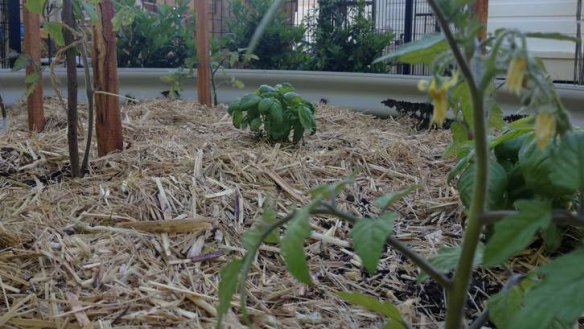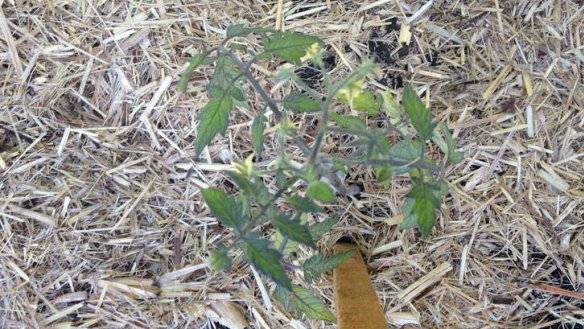Sugar-cane mulch hits the sweet spot

Good mulch is like a blanket of protection for the garden in the summer months.
It's best to use an organic mulch that allows water to freely penetrate down into the soil and will contribute to the health of the soil when it breaks down. Good options are pea straw, shredded sugar cane and lucerne hay. Peas and lucerne have deep root systems with nitrogen-fixing nodules, so will contribute nutrients and minerals to the garden. If you use lucerne hay, avoid the cheaper first-cut lucerne because you will be buying in problems with grass seeds that produce veritable crops of weeds. Avoid bales of pasture hay for the same reason. Second and third-cut lucerne is what you need, though it is more expensive.
Several Queensland companies are producing certified organic sugar-cane mulch, sold in 15-kilogram sealed bags and sold in most local garden centres.

Natural mulches will decompose over time and as the earthworms and soil microbes digest the particles and transfer them into the soil below, the soil quality is improved.
When you harvest vegetables from a well-mulched garden bed, you can simply drill small holes for the next plantings and avoid digging completely. This preserves the soil structure in pristine shape with all the micro-organisms and earthworms able to keep doing their important work.
Pine bark and woodchips are sold by landscape centres for mulching. These materials are often used for large-scale mulching, especially around native trees and shrubs. The materials take much longer to break down, but as they do, micro-organisms and fungi are removing soluble nitrogen, so there will be a loss of nitrogen available to the plants that have been mulched. Gravel and small rocks can also be used as a form of mulching.
Keeping the soil cool in the hottest of days also helps plants; a generous supply of mulch will also retain moisture and preventing crusting and cracking on the surface. During those few heavy summer storms, mulched gardens are well protected from wash and erosion. Australia has always been subject to droughts and floods and a grassed watercourse and mulched garden bed are the best ways to protect the valuable thin layer of top soil.
Mulches are also useful in the war against weeds. Weeds are competitive, taking valuable nutrients and moisture from the trees, berries and vegetables. Thick mulch suppresses weeds and grasses from germinating by minimising the reach of sunlight.
Remove any weeds that do begin to grow before they become established. This should be quite easy to do, as the soil underneath will be quite friable.
When mulching around trees or vegetables leave a tiny space around the plant to ensure you don't end up with collar rot because of too much moisture being held against the stems of the plants.
>> Owen Pidgeon runs the Loriendale Organic Orchard near Hall.
This week
■ Plant out cos and other open-leaf lettuces, beetroot, carrots and parsnips.
■ Plant out leek, kohlrabi and celeriac seedlings.
■ Complete planting those vegetables that require lots of space, including pumpkins and zucchinis, and a block of sweet corn.
■ It is a good time to plant out citrus trees, now that the danger of frosts and cold winds has passed. Choose a sunny, well-protected location.
■ Spend time in the cool evenings searching for slugs, snails and slaters among the strawberries and salad vegetables. Remove and destroy before their numbers build up.
■ Check for any appearance of aphids on stone fruit trees (and rose plants). These can be removed simply by rubbing with your thumb. Alternatively apply a soap spray twice over the following week.
■ If you have little black pear and cherry slugs appearing on these fruit trees, spray with natural pyrethrum before the leaves are skeletonised. Check again in February when another cycle of the slug can appear.
Restaurant reviews, news and the hottest openings served to your inbox.
Sign up